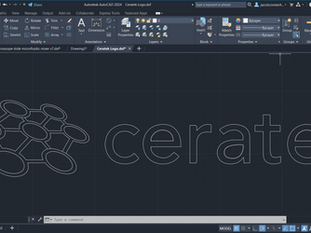

Deep Reactive Ion Etching, Ar/O2 Plasma Etching, SF6/CF4 RIE etching

Advanced Plasma Etching Techniques: DRIE, Reactive Ion Etching, and AR/O2 Plasma Etching
Introduction to Plasma Etching
Plasma etching is a crucial process in microfabrication and semiconductor manufacturing. It involves using plasma to selectively remove material from a substrate, allowing for precise patterning and etching of various materials.
Deep Reactive Ion Etching (DRIE)
Understanding DRIE Process
Deep Reactive Ion Etching (DRIE) is a specialized form of plasma etching that enables high aspect ratio etching, making it ideal for creating deep, narrow features in materials like silicon. The process involves alternating etching and passivation steps to achieve precise and deep etching profiles.
Applications of DRIE
DRIE is commonly used in the fabrication of microelectromechanical systems (MEMS), sensors, and advanced semiconductor devices where deep, straight etches are required. Its ability to create well-defined structures with high aspect ratios makes it invaluable in various industries.
Reactive Ion Etching
Insight into Reactive Ion Etching Process
Reactive Ion Etching (RIE) is another plasma etching technique that uses chemically reactive ions to remove material from a substrate. It offers high etch rates and anisotropic etching profiles, making it suitable for precise patterning in semiconductor manufacturing.
Advantages of Reactive Ion Etching
RIE provides excellent control over etch depth and sidewall profile, making it a preferred choice for creating features with high aspect ratios. It also offers good selectivity and uniformity, contributing to its widespread use in the industry.
Differences between DRIE and RIE
While both DRIE and RIE are plasma etching techniques, they differ in terms of etch profile, aspect ratio, and applications. DRIE excels in creating deep, narrow features, whereas RIE is more versatile for general etching requirements with high precision.
AR/O2 Plasma Etching
Understanding AR/O2 Plasma Etching
AR/O2 Plasma Etching involves using a mixture of argon and oxygen gases in the plasma to achieve specific etching characteristics. The combination of these gases allows for controlled etching rates and selectivity, making it suitable for various materials.
Applications and Benefits
AR/O2 Plasma Etching finds applications in creating fine patterns, improving surface roughness, and enhancing adhesion properties on substrates. Its ability to fine-tune etching parameters provides flexibility in achieving desired outcomes in microfabrication processes.
Ceratek offers the capability to produce microstructured materials through a variety of methods, such as:
Utilizing UV direct write lithography to pattern photopolymer spin-coated wafers made of:
AlTiC
Alumina ceramic
YTZP and zirconia
SiO2/fused silica/quartz
Glasses
Silicon (with etching methods dependent on wafer crystal orientation for single crystal Si)
Polymers
Other semiconductor materials
And much more! Contact us today to consult with an application engineer for your upcoming process development project.




